Analysis of CSIR NET July 2024 Question Paper
The Question Paper and Answer Key of CSIR NET Life Science July 2024 were released last week. Like every year, Biotecnika Experts have meticulously analyzed the question papers of both morning and evening sessions. This analysis includes a detailed breakdown of all units, the number of questions asked from each unit, and the difficulty level, covering both the morning and evening shifts. Below is a comprehensive overview, including the expected cut-off marks based on the difficulty and distribution of questions.
Table of Contents
General Observations
Across both shifts, the exam maintained a consistent level of difficulty, ranging from medium to difficult. The questions were well-distributed across essential topics, aligning with the syllabus. Although there were few surprises in few of the units, where either questions were asked from unexpected topics, or the question distribution was somewhat skewed, with some subunits being more heavily represented than others. The evening shift was generally found to be slightly more challenging than the morning shift, with a greater emphasis on application-based questions.
| Session | Overall Difficulty | Key characteristics |
| Morning | Medium to Difficult |
|
| Evening | Difficult |
|
CSIR NET Life Science July 2024 – Unit Wise Analysis
UNIT 1
Morning Shift:
- Question Distribution: 4 questions in Section B, 6 in Section C (Total: 10).
- Difficulty Level: Moderately challenging to difficult, with the final verdict being ‘Difficult.’
Comments:
- The questions spanned almost all important subtopics.
- Questions were seen from almost all important topics of the syllabus, i.e water molecule structure, nucleic acids (Hoogsteen pairing), protein folds and denaturation, enzyme MM kinetics, thermodynamics (free energy calculation), and carbohydrate metabolism(enzymatic regulations).
- Ramachandran Plot based questions were asked after a long time. There were 2 such questions and both were asked in Part B
- Statement based, figure/graph based and numerical questions were asked which required conceptual clarity and analytical skills
Evening Shift:
- Question Distribution: 5 questions in Section B, 6 in Section C (Total: 11).
- Difficulty Level: Similar to the morning shift, marked as ‘Difficult.’
Comments:
- Questions were expected and covered key areas effectively
- Few questions were from expected topics like peptide charge calculation, enzyme inhibition kinetics(numerical question), oxidative phosphorylation (PMF based) and nucleic acids (Z-DNA properties as well as secondary structure prediction from sequence)
- Mostly all questions were direct, expect 2 questions which required analytical thinking and logical reasoning to solve. These were based on natural substrate prediction for a peptide, and a numerical question on cellulose chains.
- Questions were also seen from medium important topics like pH (average calculation), stereoisomers(of D-glucose), amino acid metabolism and lipid catabolism(Beta oxidation)
Unit 2:
Morning Shift:
- Question Distribution: 2 questions in Section B, 4 in Section C (Total: 6).
- Difficulty Level: Medium, with the final verdict being ‘Medium.’
Comments:
- The questions were well-distributed across critical topics
- Compared to previous question papers, this time less number of questions were there. Part B questions were direct. Under Part C 1 analytical and 3 direct questions were there. This time, ‘match the following’ kind of questions from cell organelles, protein targeting and cytoskeletal system were ignored. Microbial physiology was also ignored.
Evening Shift:
- Question Distribution: 2 questions in Section B, 5 in Section C (Total: 8).
- Difficulty Level: Medium to Difficult, final verdict ‘Difficult.’
- Comments: The evening shift had slightly more challenging questions compared to the morning.
- The evening shift had slightly more challenging questions compared to the morning. 2 Part B direct questions were asked. Part C was challenging. Match the following from cell organelles & cell cycle were comparatively better .Experimental question was asked from cytoskeletal system(unlike the usual match the following and statement based question)
Analysis of CSIR NET Life Science July 2024 Question Paper
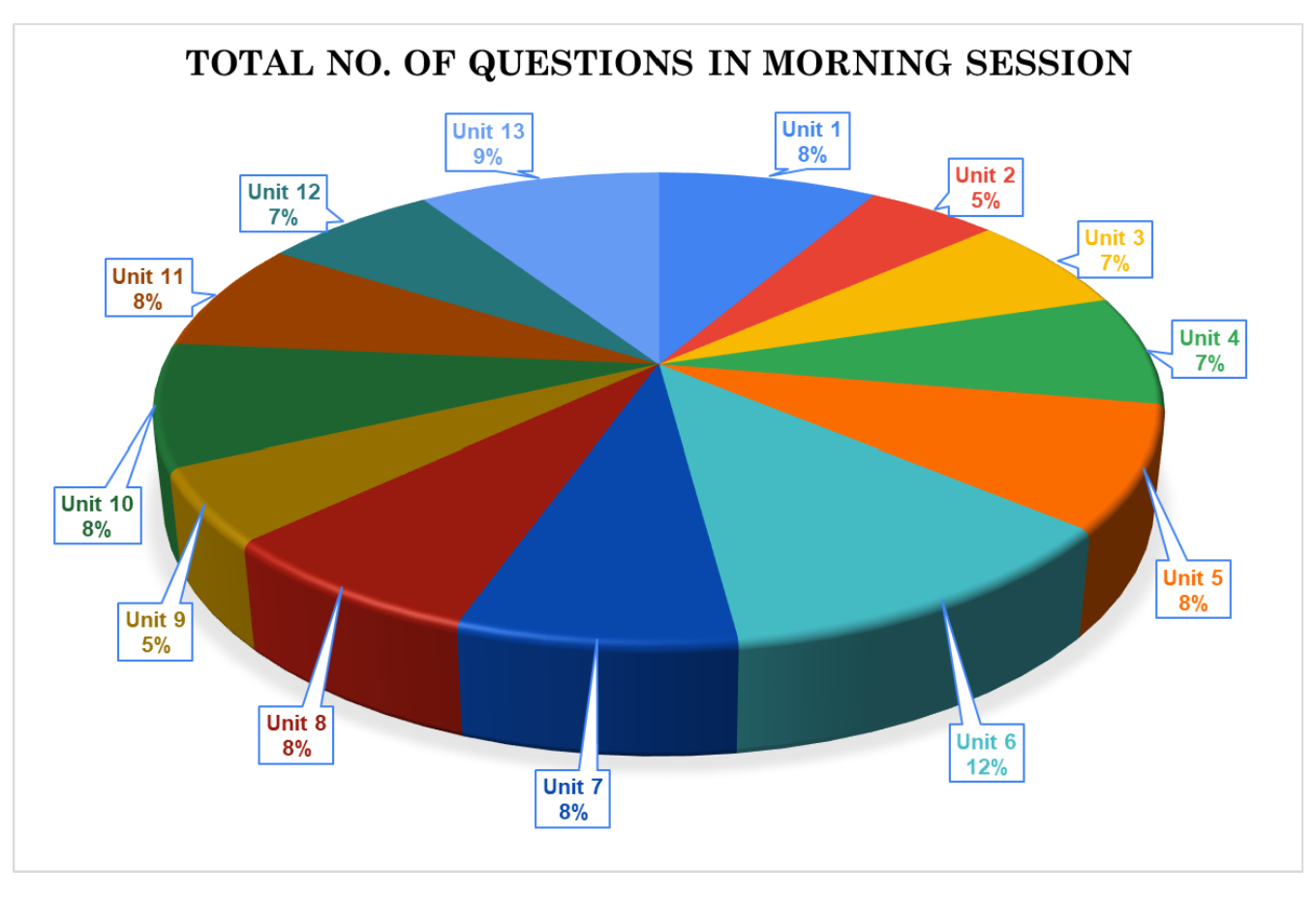
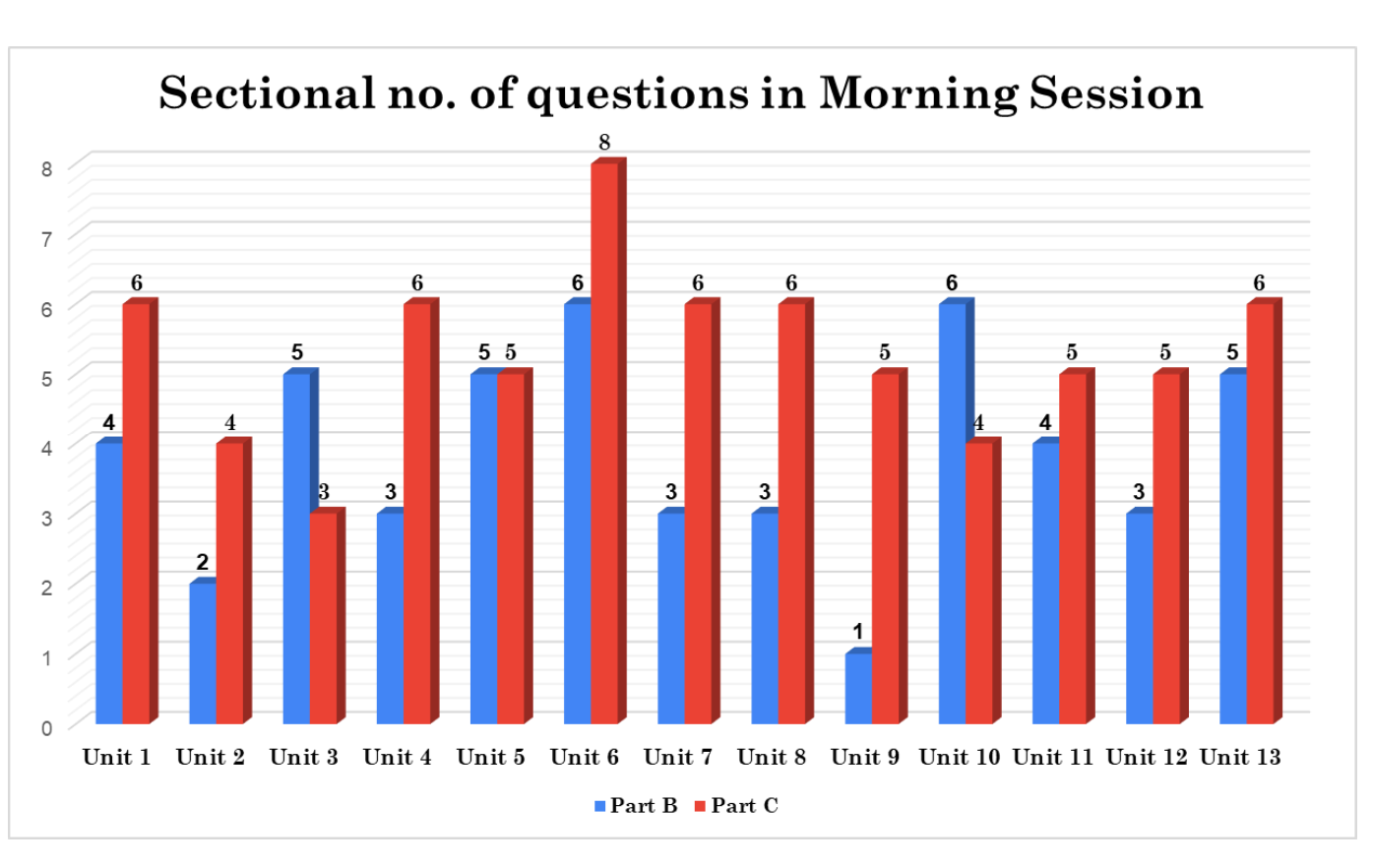
Unit 3:
Morning Shift:
- Question Distribution: 5 questions in Section B, 3 in Section C (Total: 8).
- Difficulty Level: Medium, with a consistent ‘Medium’ verdict.
Comments:
- Focused on important topics like DNA replication and repair.
- Questions were asked from important topics like DNA repair, DNA Polymerase property, etc. Some questions were very direct, some were very analytical not only for Part C questions but also for Part B.The analytical questions were not very difficult because they were based on simple facts and concepts.
Evening Shift:
- Question Distribution: 2 questions in Section B, 4 in Section C (Total: 6).
- Difficulty Level: Medium, with similar coverage of key areas.
Comments:
- The complexity was balanced across both shifts
- This time, there were less direct questions on Unit 3 alone, but the concepts were linked with PCR or Blotting techniques. We see direct questions from operon, Topoisomerase, RNA Pol, etc. On average the questions were of moderate difficulty. However the experimental questions were challenging and required clear concepts of related topics as well.
Unit 4:
Morning Shift:
- Question Distribution: 3 questions in Section B, 6 in Section C (Total: 9).
- Difficulty Level: Medium, final verdict ‘Medium.’
Comments:
- The questions were disproportionately concentrated in one particular subunit
- As always, 1 question was there Host-Parasite interaction in the form of ‘match the following’. Only 1 cancer related question was there but it was a direct question.
- For the first time, major signaling pathways were ignored and 1 Part C question was seen from anchoring proteins from the signaling cascade.
- It’s surprising that a lot of questions in unit 4 were only from immunology. In the morning session, from immunology itself 3 Part C questions were asked, while apoptosis and cellular communication were completely ignored.
- Some questions were found to be combined with techniques(From Unit-13)
Evening Shift:
- Question Distribution: 4 questions in Section B, 5 in Section C (Total: 9).
- Difficulty Level: Medium to Difficult, with a final ‘Difficult’ verdict.
Comments:
- Similar topics were covered, with a slight increase in difficulty.
- In the evening session also immunology itself had 2 PartC questions. Questions were from MHC and T cell development, these topics are quite expected.
- Experimental analytical questions from cancer were tough.
- Signaling related questions were asked in combination with technique, there were no direct questions asked.
- Apoptosis and cellular communication were completely ignored.
Morning Shift:
- Question Distribution: 5 questions in Section B, 5 in Section C (Total: 10).
- Difficulty Level: Medium to Difficult, with the final verdict being ‘Medium.’
Comments:
- The questions required application-based understanding.
- Although few questions were direct, most of the questions from this unit were quite twisted and based on experimental analysis and inference, which could have only been solved correctly with clear and in-depth understanding of concepts.
- These questions were based on chimeric (genetically mosaic) embryos phenotype, embryonic manipulations and from signal transduction pathways
- There were questions on conditional specification, fertilization (sperm contribution and cortical reaction), C.elegans early embryonic cell specification, ABC model of flowering, and Drosophila mutant phenotype analysis
- Unlike most of the exams, this time there were no questions on sea urchin development, vulva development, neurulation and limb development.
Evening Shift:
- Question Distribution: 4 questions in Section B, 6 in Section C (Total: 10).
- Difficulty Level: Difficult, final verdict ‘Difficult.’
Comments:
- Fewer direct questions were observed, with a focus on conceptual understanding.
- Questions this time were not that direct, in-depth conceptual clarity was required to solve correctly. These experiment analytical questions were based on transgenic overexpression and embryonic manipulations (in Xenopus & in mammals)
- Other questions were seen from acrosomal reaction, Shh signaling , loss of function mutational effect(in Drosophila & snapdragon) and from programmed cell death.
- There was a question from metamorphosis , from which questions were never asked in the past.
- Surprisingly, usual topics like basics terms & terminologies, sea urchin development, neurulation and limb development were not touched at all.
Unit 6:
Morning Shift:
- Question Distribution: 4 questions in Section B, 5 in Section C (Total: 9).
- Difficulty Level: Medium, with the final verdict being ‘Medium.’
Comments:
- The questions were moderately challenging.
- Most of the Part B questions were direct.
- In Part C, questions were asked from unpredictable topics like nitrogen metabolism, solute transport and stress physiology. Also these questions were quite challenging too.
- This time sensory photobiology and secondary metabolites were ignored(that is usually asked under Part C)
Evening Shift:
- Question Distribution: 3 questions in Section B, 6 in Section C (Total: 9).
- Difficulty Level: Medium to Difficult, final verdict ‘Difficult.’
Comments:
- The evening shift presented slightly more complex questions.
- This time the major focus was on Secondary metabolites. Only 2 Part B questions came from that too from secondary metabolites. Out of 6 Part C , 3 questions were from secondary metabolites itself.
- Phytohormone related questions were as usual direct.
- Experimental question was asked from Solute transport.surprisingly only 1 Part C question came from photosynthesis.
- No questions came from Sensory photobiology, nitrogen metabolism and stress physiology.
Unit 7:
Morning Shift:
- Question Distribution: 3 questions in Section B, 6 in Section C (Total: 9).
- Difficulty Level: Medium, final verdict ‘Medium.’
Comments:
- Covered essential topics, with a balanced difficulty level.
- As expected questions were from the nervous system, excretory system, respiratory system, thermoregulation. Although the questions were from predicted topics, some of the questions were challenging.
- PartB questions were factual and difficult.
Evening Shift:
- Question Distribution: 4 questions in Section B, 5 in Section C (Total: 9).
- Difficulty Level: Medium to Difficult, final verdict ‘Difficult.’
Comments:
- Questions in the evening shift were more application-based.
- Some questions in evening session were match the following types while mostly were statement based, match the following questions were easy but needed a detailed study of the topics asked
- As expected questions in PartC were asked from Cardiovascular system, excretory system and thermoregulation
Unit 8:
Morning Shift:
- Question Distribution: 2 questions in Section B, 6 in Section C (Total: 8).
- Difficulty Level: Medium, final verdict ‘Medium.’
Comments:
- Focused on well-known topics with moderate difficulty.
- Molecular markers portion was covered in the questions, as expected. The question from pedigree analysis was quite difficult.
- Surprisingly, no numerical based question was asked from linkage mapping. However, a statement based question from linkage mapping was asked.
- A topic that was not so covered in previous year’s CSIR papers was asked in this session like extrachromosomal inheritance and polygenic inheritance.
Evening Shift:
- Question Distribution: 4 questions in Section B, 5 in Section C (Total: 9).
- Difficulty Level: Difficult, final verdict ‘Difficult.’
Comments:
- The evening session had questions requiring deeper understanding.
- Deletion mapping, a topic that has been asked multiple times in previous years, was asked in this session as well.
- As in the morning session, questions were asked from polygenic inheritance and quantitative traits. Tetrad analysis and microbial genetics was also covered in the question paper.
- Surprisingly, there was no question from the topic of mutation and gene mapping.
Analysis of CSIR NET Life Science July 2024 Question Paper
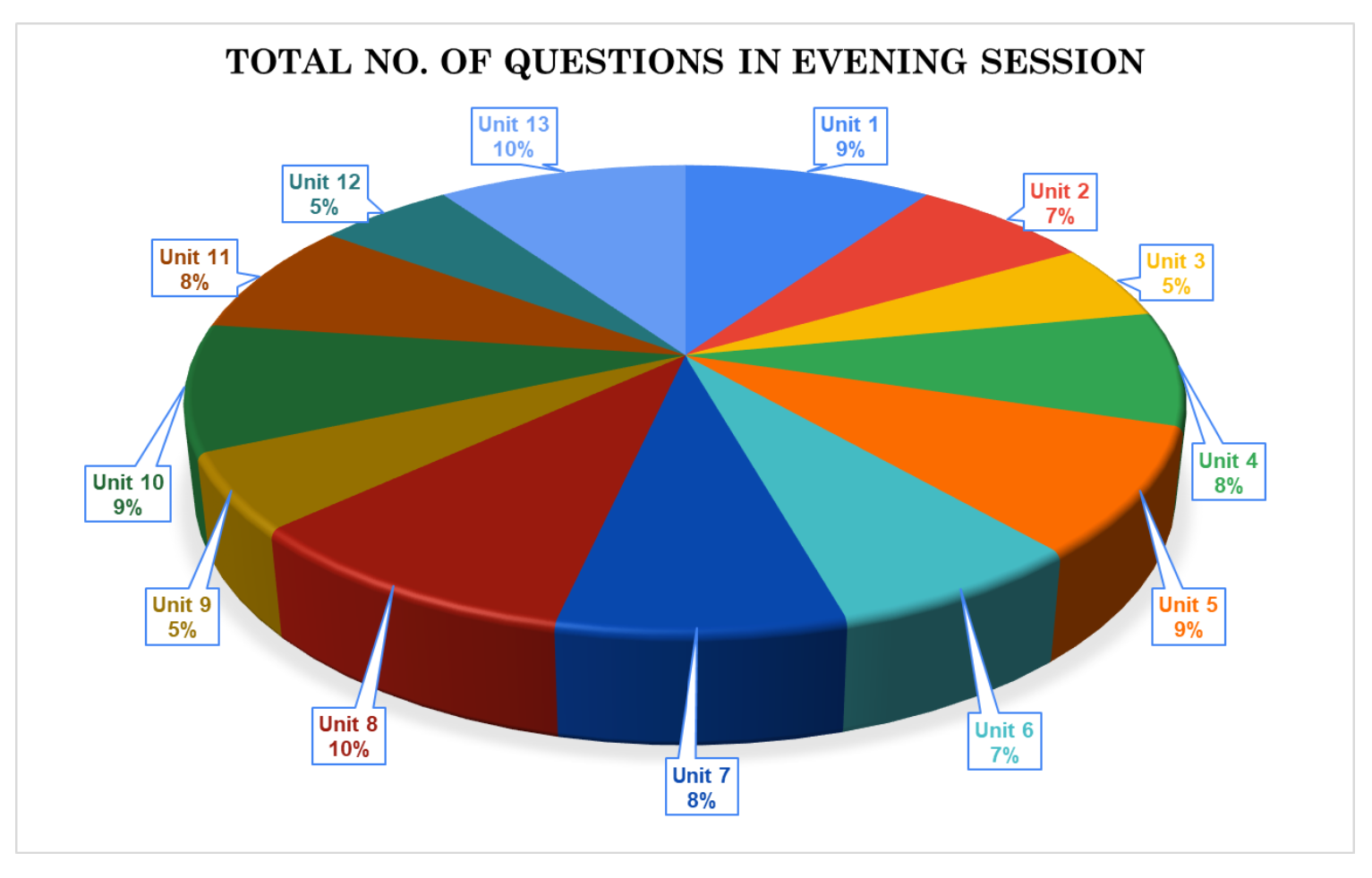
Unit 9:
Morning Shift:
- Question Distribution: 3 questions in Section B, 5 in Section C (Total: 8).
- Difficulty Level: Medium, final verdict ‘Medium.’
Comments:
- Questions were consistent with previous trends, covering essential concepts.
- Part B Questions asked were direct, memory based. Questions were asked from topics about invasive species.
- Part C Questions were direct, required conceptual clarity.
- Match the following type question was asked on Larval stage of animals, Plant pathogens & their taxonomic groups and Nomenclatural categories.
- Figure based questions were asked on floral parts in floral diagram and molecular phylogeny.
Evening Shift:
- Question Distribution: 3 questions in Section B, 5 in Section C (Total: 8).
- Difficulty Level: Medium, final verdict ‘Medium.’
Comments:
- Similar to the morning shift, but with slightly more challenging questions.
- Part B Statement based questions were asked from Homoplasy.
- One figure based question on phylogenetic trees of invertebrates was also asked.
- Part C One statement based question on Nomenclatural rules was asked.
- Match the following type questions were asked on topics like geographical regions and avian fauna, Mammals & Indian locations and National parks & Indian mountain ranges.
Unit 10:
Morning Shift:
- Question Distribution: 2 questions in Section B, 6 in Section C (Total: 8).
- Difficulty Level: Medium, final verdict ‘Medium.’
Comments:
- Questions were from expected topics with a balanced difficulty level.
- In this Exam we saw a lot of questions from unit 10, many graph based, and tables.
- Some questions were very direct but the graph based ones and some other questions like from NPP, Reproductive rate (R0), Population measurements,etc. were challenging.
- These questions were based on simple concepts but students had to link 2 concepts to find the answer, and the challenge lied at this point.
Evening Shift:
- Question Distribution: 3 questions in Section B, 5 in Section C (Total: 8).
- Difficulty Level: Medium to Difficult, final verdict ‘Difficult.’
Comments:
- The evening shift questions required more application-based thinking.
- In the Evening batch also we find a lot of questions being set from Unit 10, specially in Part C.
- The Part C questions were of Medium to difficult level.
- There were graph based questions,Numerical and even tabular.
- The Numerical and Graph based questions were challenging, however they were based on simple concepts.
Unit 11:
Morning Shift:
- Question Distribution: 4 questions in Section B, 4 in Section C (Total: 8).
- Difficulty Level: Medium, final verdict ‘Medium.’
Comments:
- The questions were moderately challenging.
- Questions were asked from expected portions like geological scale, HW equilibrium and kin selection.
- Surprisingly there were no questions from parental investment and animal behavior.
Evening Shift:
- Question Distribution: 4 questions in Section B, 4 in Section C (Total: 8).
- Difficulty Level: Medium to Difficult, final verdict ‘Difficult.’
Comments:
- The evening session had more conceptual questions.
- Questions were asked from Principle of maximum phylogeny, Hamilton rule and animal mating behavior.
- In this session HW equilibrium was completely ignored ( maybe as it was asked in the morning session).
- Some of the Part C questions were a little tricky.
Unit 12:
Morning Shift:
- Question Distribution: 2 questions in Section B, 6 in Section C (Total: 8).
- Difficulty Level: Medium
Comments:
- Consistent with the syllabus, with a balanced approach to difficulty.
- Unexpected number of questions were there from this unit.
- Questions based on plant breeding, molecular markers were the prime focus.
- Surprisingly, Agrobacterium was ignored this time.
- Vaccine related questions are hardly asked, but this time it was asked in both part B and in Part C(covid vaccine related in combination with immunology from Unit-4).
- Questions were asked in combination with techniques(Unit-13 ) and from genetics(unit-8). 1 Part C question was asked from Animal tissue culture media as well.
Evening Shift:
- Question Distribution: 4 questions in Section B, 5 in Section C (Total: 9).
- Difficulty Level: Medium to Difficult, final verdict ‘Difficult.’
Comments:
- The evening session was slightly more challenging.
- For the evening shift also, an unexpected number of questions were asked.
- In Part B , one question was there from barcoding and another question from QTL mapping.
- Agrobacterium related questions were ignored.
- Covaxin related questions were asked in the evening shift also.
- Another question was asked about the amino acid biosynthetic pathway in plants(from Unit-6) combined with MS medium(Unit-12).
Analysis of CSIR NET Life Science July 2024 Question Paper
Unit 13:
Morning Shift:
- Question Distribution: 3 questions in Section B, 6 in Section C (Total: 9).
- Difficulty Level: Medium, final verdict ‘Medium.’
Comments:
- Covered key areas with a moderate level of difficulty.
- Part B questions asked were statement based, and figure based which required conceptual clarity
- As expected, questions asked were based on topics like UV-Visible spectra (figure-based) , DNA manipulating & modifying enzymes, and Measure of central tendency, (Mean, median, Mode). One question on rate zonal centrifugation was also asked.
- Questions were framed majorly from topics of following Unit 13 subunits:
- 13A (Molecular Biology & Recombinant DNA methods);
- 13C (Biophysical methods)
- 13D (Statistical Methods);
- 13E: (Electrophysiological Methods)
- Part C Questions asked were direct as well as combination based requiring conceptual clarity and analytical skills.
- Statement based questions were asked from topics like Reference Intervals, and Line transect sampling
- Match the type question was asked on Super resolution microscopy as expected.
- Similarly experimental based questions were asked by combining concepts from cloning and mismatch repair mechanism (Unit 13&3), Agarose gel electrophoresis, western blotting and HeLa cells from (Unit 13 & 4), co-Immunoprecipitation and chaperones, co-chaperones (Unit 13 & 2)
- Questions were framed mainly from topics of following Unit 13 subunits:
- 13A (Molecular Biology and Recombinant DNA methods);
- 13B (Histochemical and Immunotechniques);
- 13D (Statistical Methods);
- 13F (Microscopic Techniques);
- 13H (Methods in Field Biology)
Evening Shift:
- Question Distribution: 4 questions in Section B, 5 in Section C (Total: 9).
- Difficulty Level: Medium to Difficult, final verdict ‘Difficult.’
Comments:
- The evening shift focused more on application-based questions.
- Part B questions asked were direct as well as experimental based which required conceptual clarity and analytical skills.
- Questions asked were based on topics like :
- Southern blot analysis of different cells (human fibroblasts, cancer cells), SDS-PAGE, Parametric statistical test, Confidence interval and ELISA.
- Questions were framed majorly from topics of following Unit 13 subunits:
- 13A (Molecular Biology & Recombinant DNA methods);
- 13B (Histochemical and Immunotechniques);
- 13D (Statistical Methods)
- Part C Questions asked were direct as well as combination based requiring conceptual clarity and analytical skills.
- Match the type question was asked on ECG leads and Electrode placements & Connections.
- Figure based question was asked by combining concepts like Repair protein & Western blot analysis (Unit 3 & 13), Immunoprecipitation of HA-Yfg (Unit 13 & 4) and Receptor tyrosine kinase and autoradiogram (Unit 4 & 13). (Two figure based questions on PCR and primer sequence were also asked.
- Questions were framed mainly from topics of following Unit 13 subunits:
- 13A (Molecular Biology and Recombinant DNA methods);
- 13B (Histochemical and Immunotechniques);
- 13G (Electrophysiological methods)
Analysis of CSIR NET July 2024 – Overall Difficulty Level
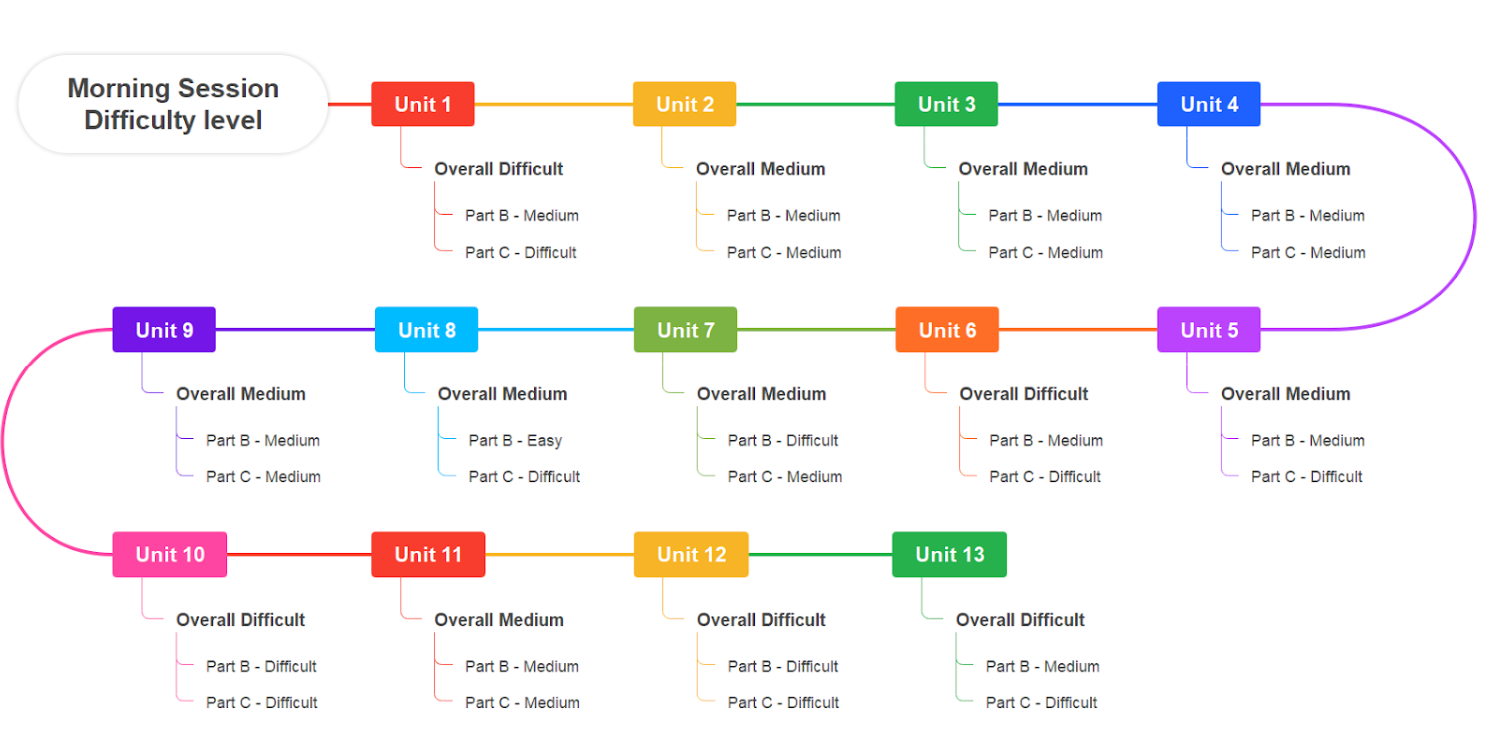

Part A:
Difficulty Level: Difficulty level of the morning session was more compared to the evening session.
Comments:
- This section prominently included logical reasoning and analytical ability questions, such as logical puzzles and pattern recognition, requiring candidates to make inferences and identify relationships.
- Numerical ability was another key focus, with questions on basic arithmetic operations, percentages, averages, and data interpretation from graphs and charts.
- Some questions involved comparing quantities or determining relationships between variables.
- Graphical analysis questions required candidates to visually interpret and mathematically reason through data presented in charts and graphs. Additionally, quantitative comparison questions challenged candidates to assess relationships between variables quickly.
- Although less emphasized, verbal reasoning questions also appeared, testing language proficiency and logical connections between ideas.
Expected Cut-Off for CSIR NET Life Science July 2024 Exam
Based on the comprehensive analysis of the question paper, the expected cut-off marks for the CSIR NET Life Science July 2024 are estimated as follows:
| Category | JRF Cut-Off (Percentile) | JRF Cut-Off (Actual Marks) | LS Cut-Off (Percentile) | LS Cut-Off (Actual marks) |
| General | 98.9 | 110-114 | 97.3 | 100-104 |
| OBC | 96.9 | 102-105 | 93.9 | 95-98 |
| SC | 91.5 | 90-94 | 88.1 | 83-86 |
| ST | 85.3 | 84-87 | 80.7 | 76-80 |
| EWS | 97.0 | 103-106 | 94.0 | 96-99 |
| PwD | 73.8 | 66-72 | 71.4 | 60-66 |
These cut-off predictions consider the overall difficulty level of the exam and historical trends. However, the actual cut-off may vary depending on the final performance of candidates. For precise figures, it is best to check official announcements from the NTA or CSIR once they are released.
Final Verdict
The CSIR NET Life Science July 2024 exam was a challenging and comprehensive test that thoroughly evaluated candidates’ understanding and application of core life sciences concepts. The exam maintained a balanced approach in its question distribution, ensuring coverage of all essential units while varying the difficulty level across shifts.
Conclusion
The CSIR NET Life Science July 2024 exam was demanding but fair, offering a rigorous assessment of candidates’ readiness for research and academic careers in life sciences. The expected cut-off marks reflect the competitive nature of the exam, and candidates are advised to prepare thoroughly, focusing on both conceptual understanding and application.
Future aspirants should take note of the trends observed in this analysis and adjust their preparation strategies accordingly. By focusing on core concepts, practicing application-based questions, and managing their time effectively, candidates can enhance their chances of success in future exams.
Analysis of CSIR NET Life Science July 2024 Question Paper


























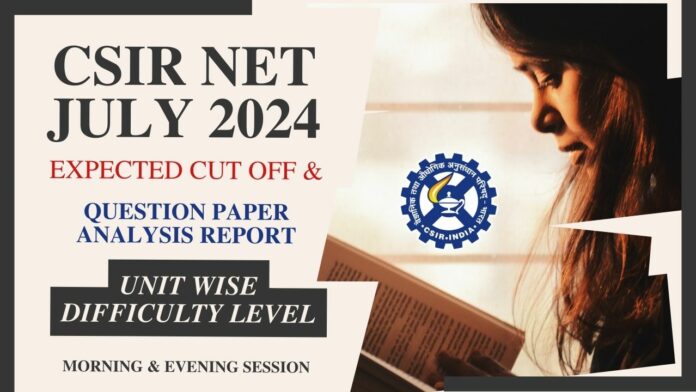
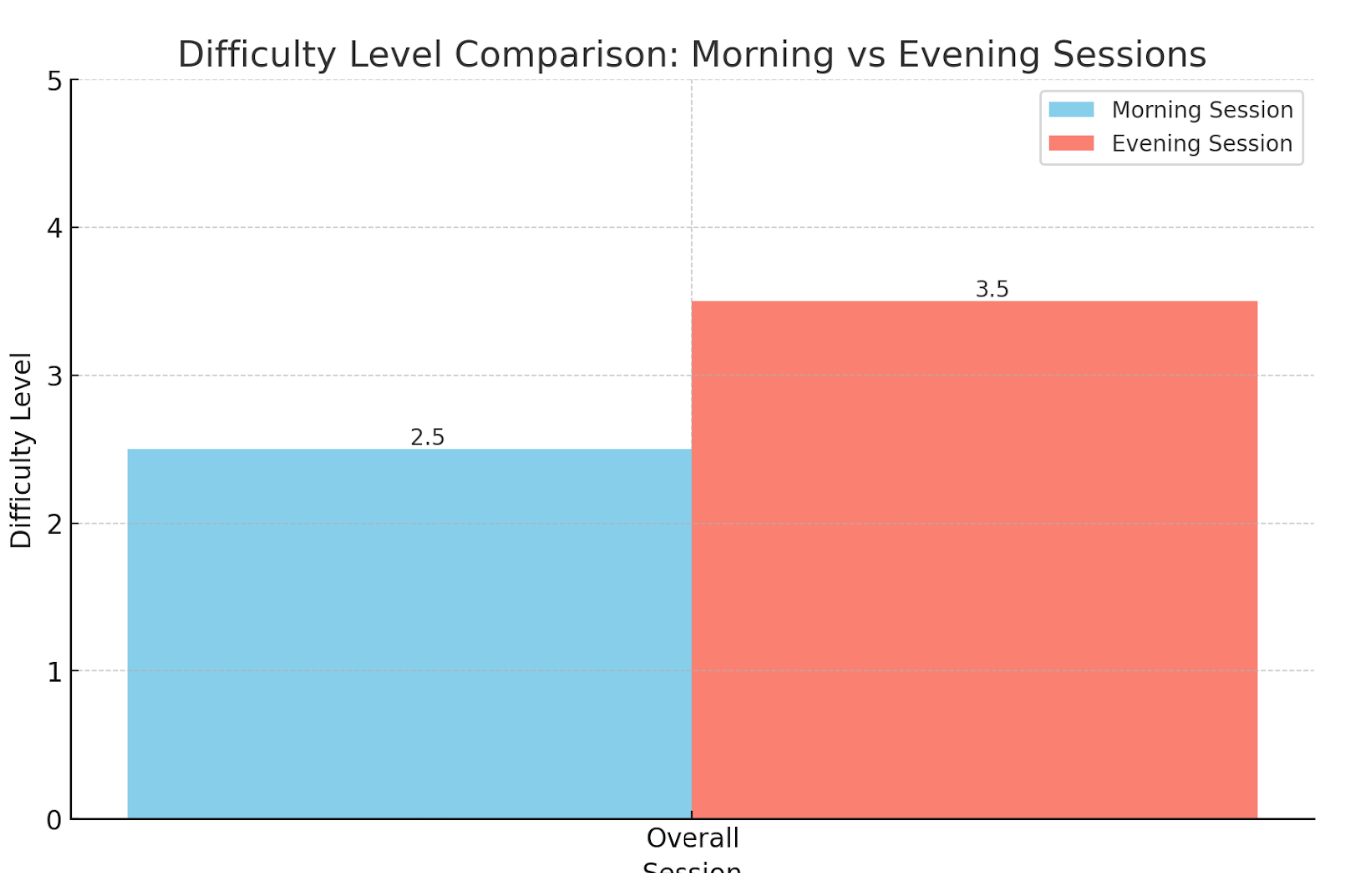
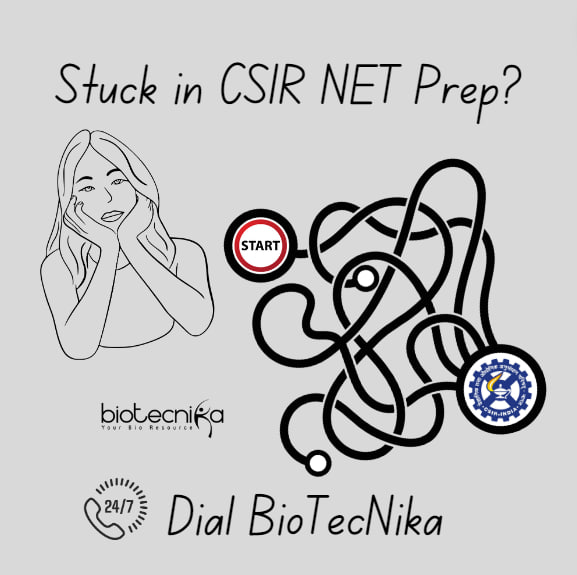
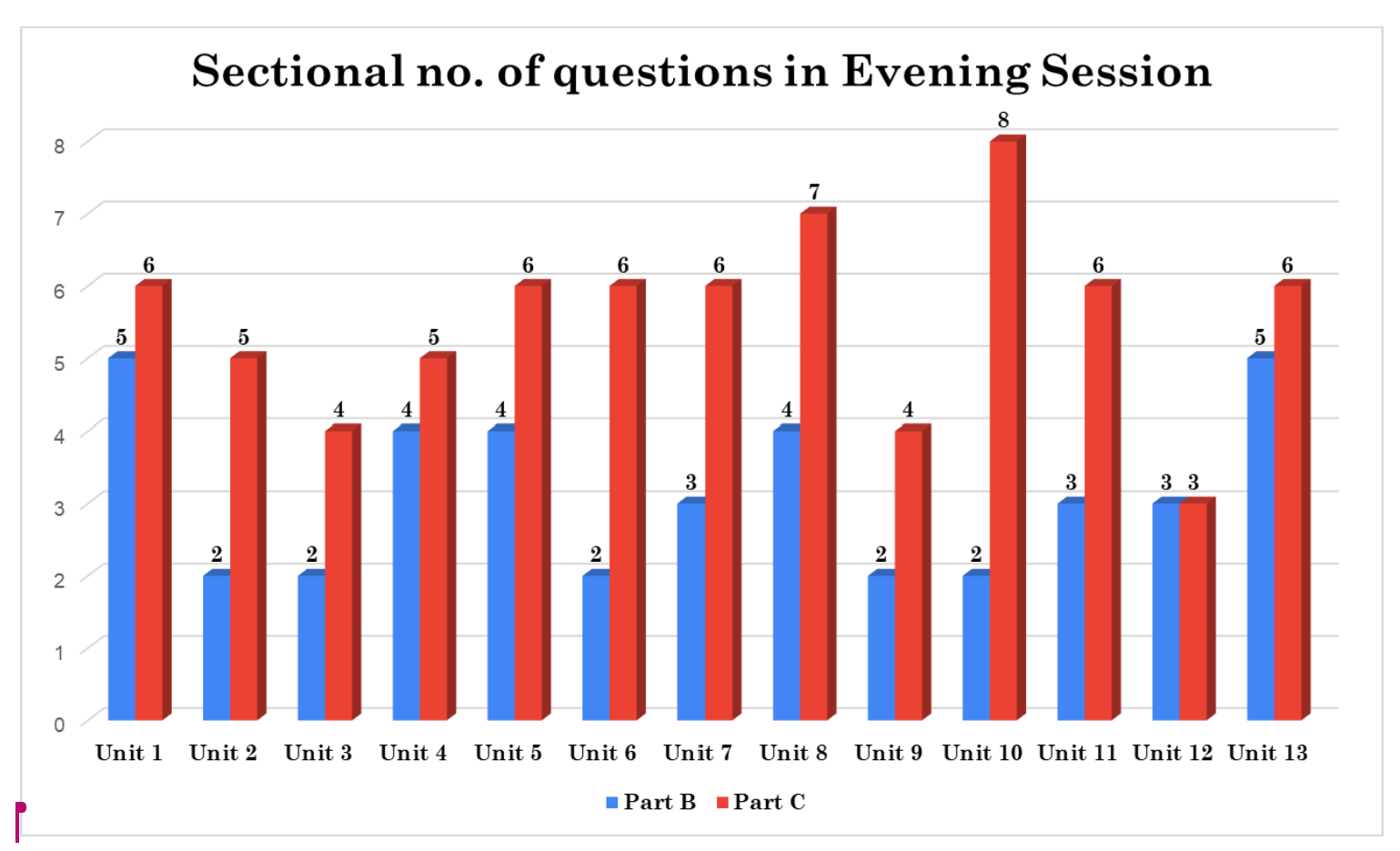











Sir I will requested in CSIR net exams December session 2024